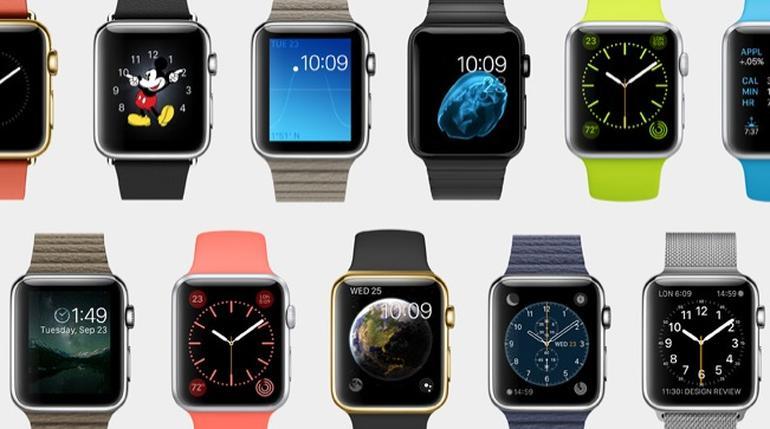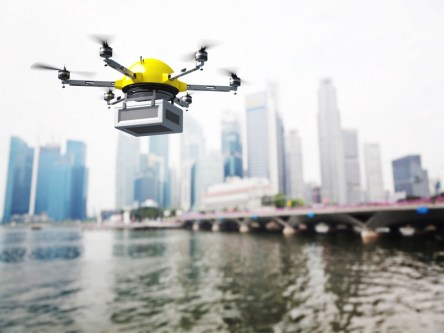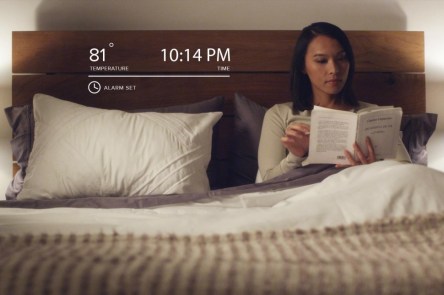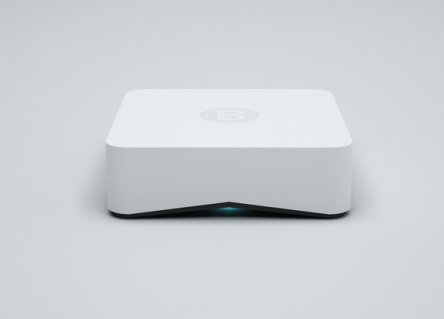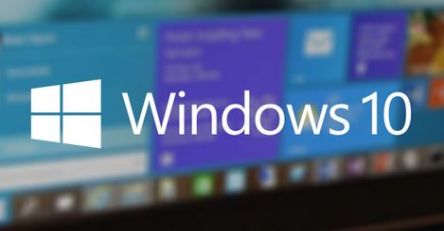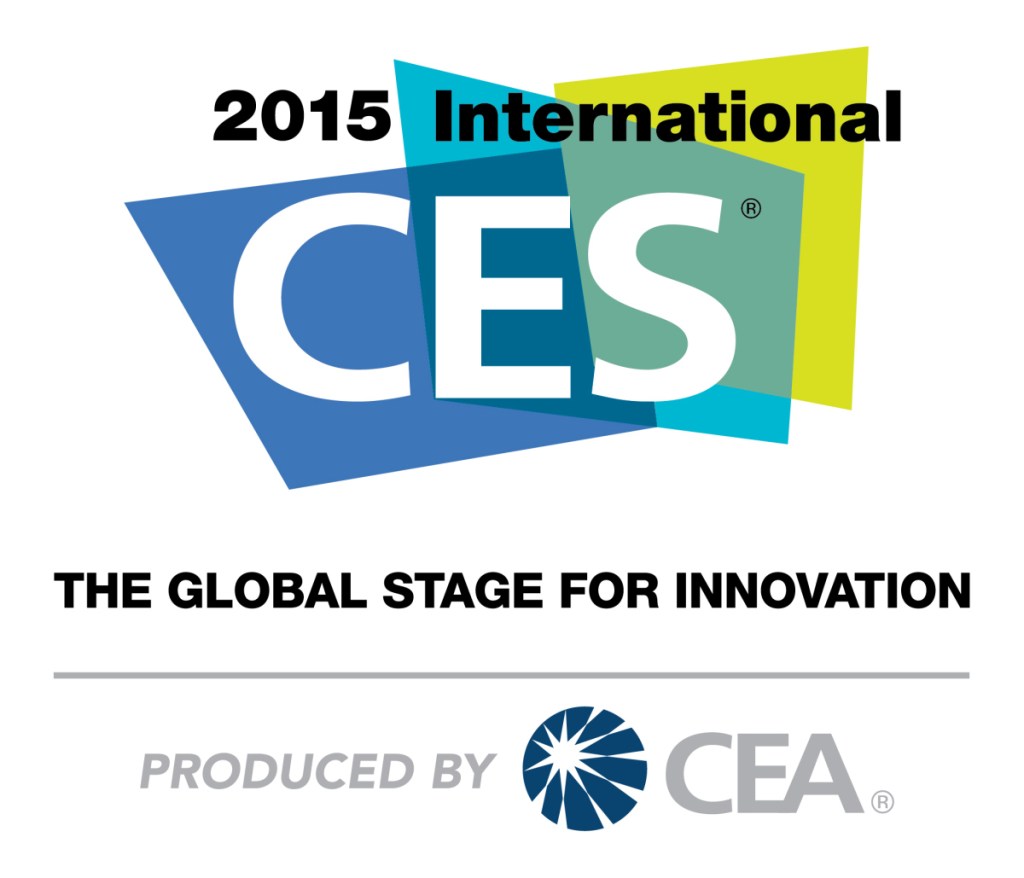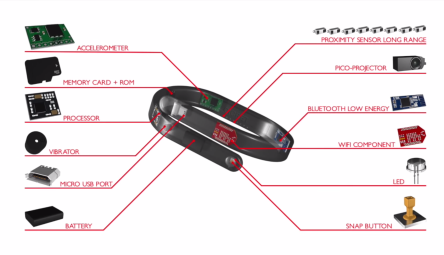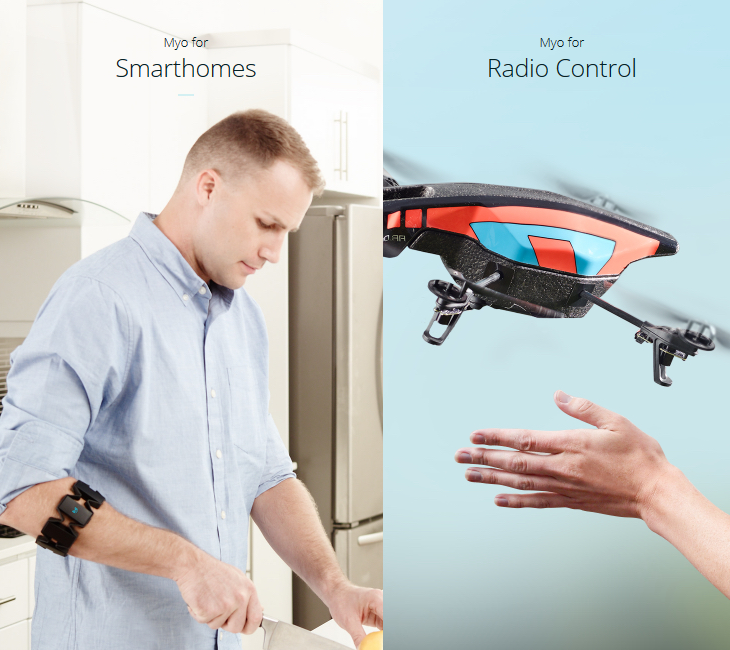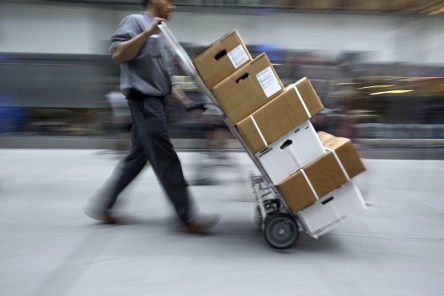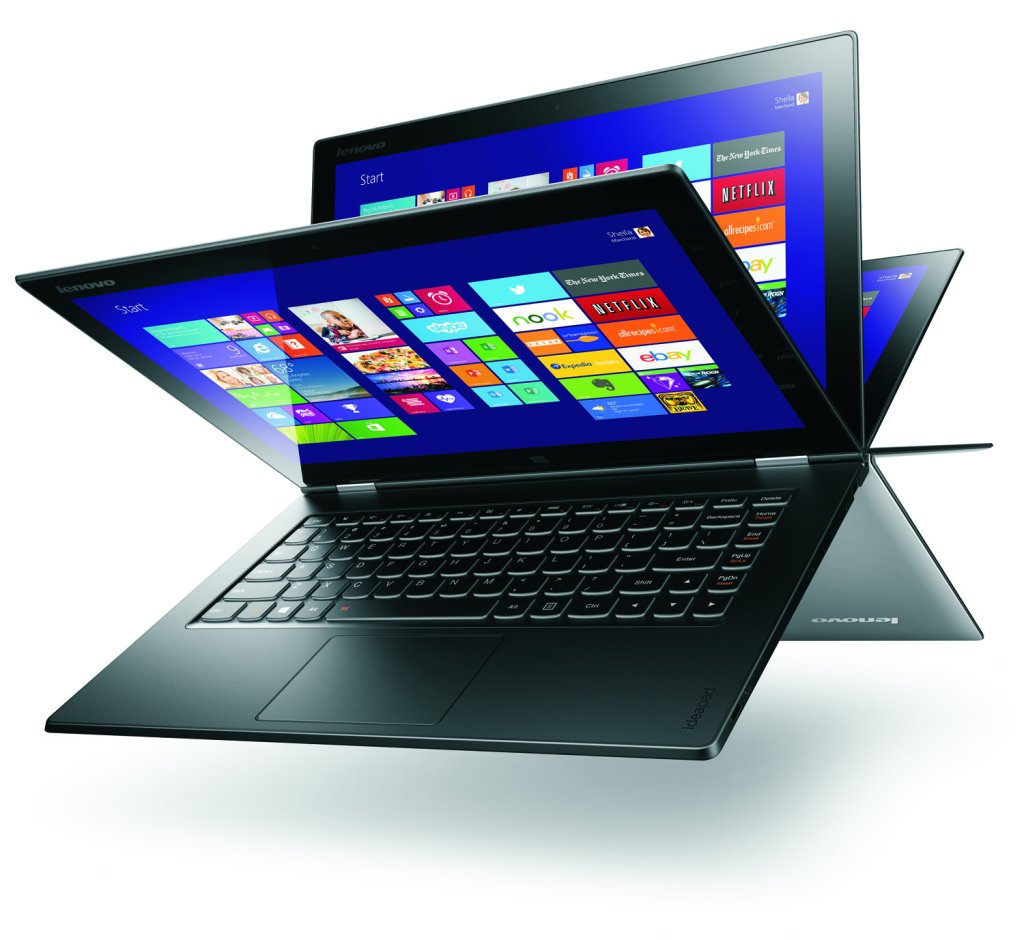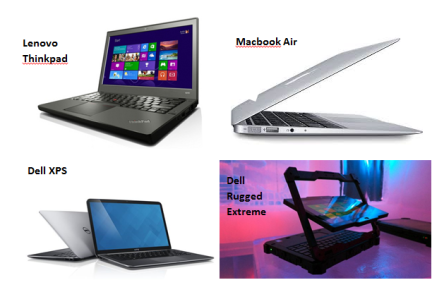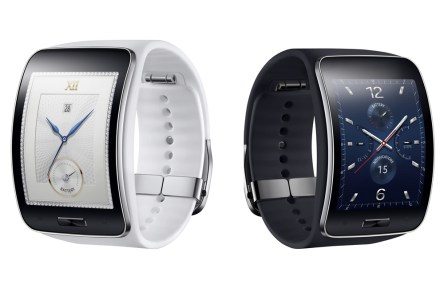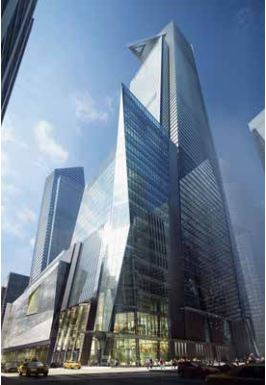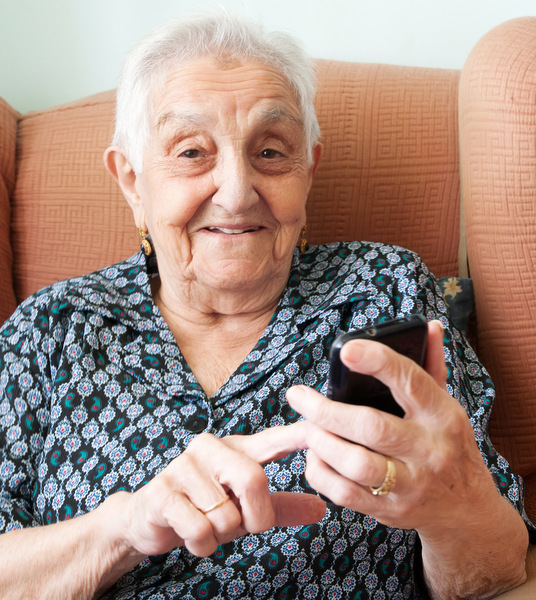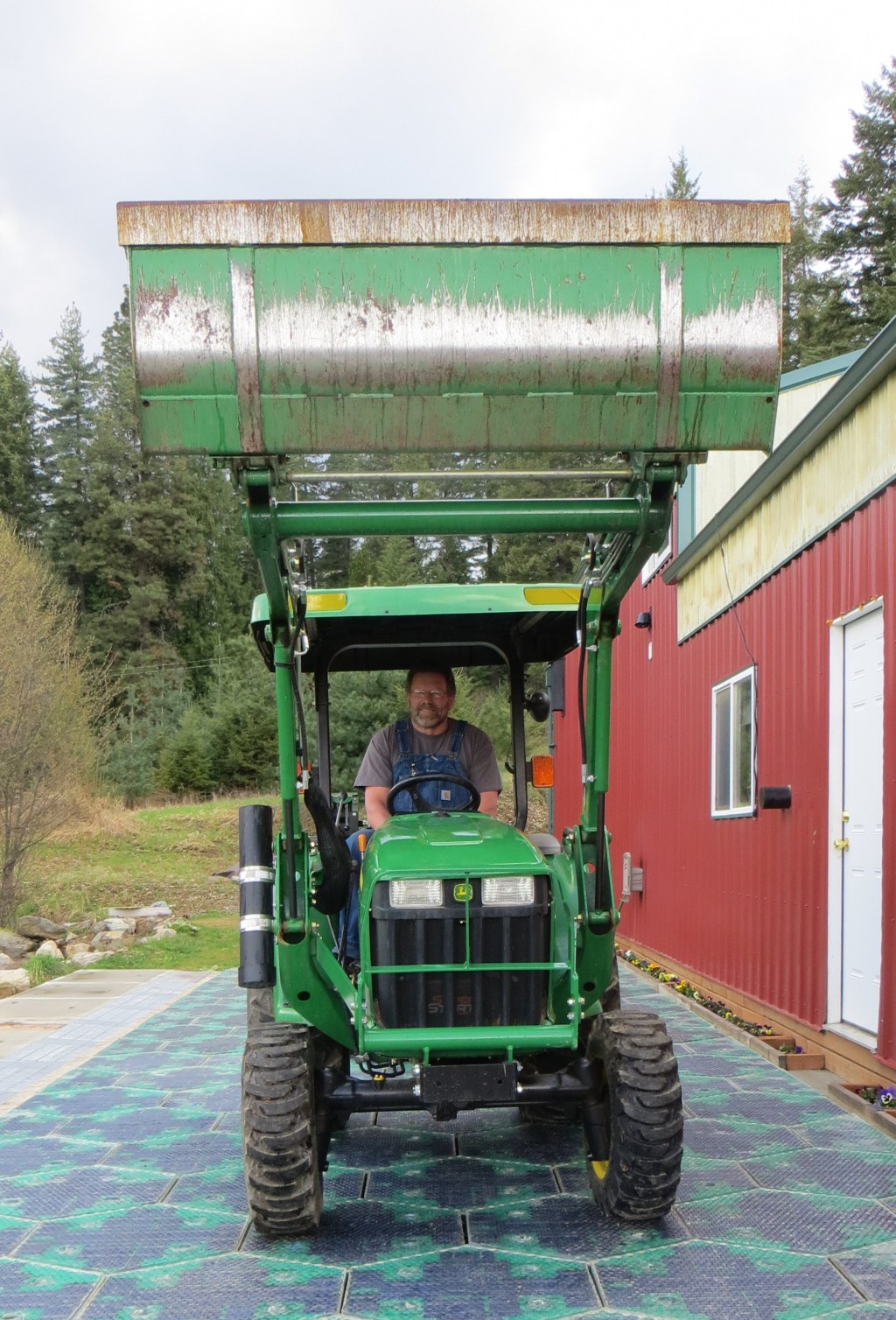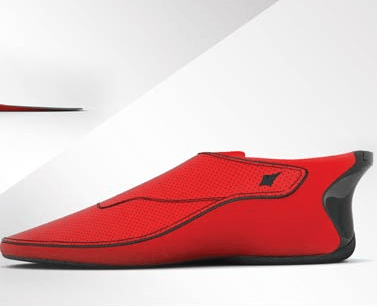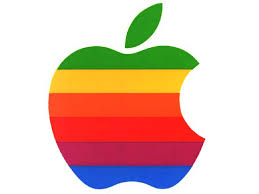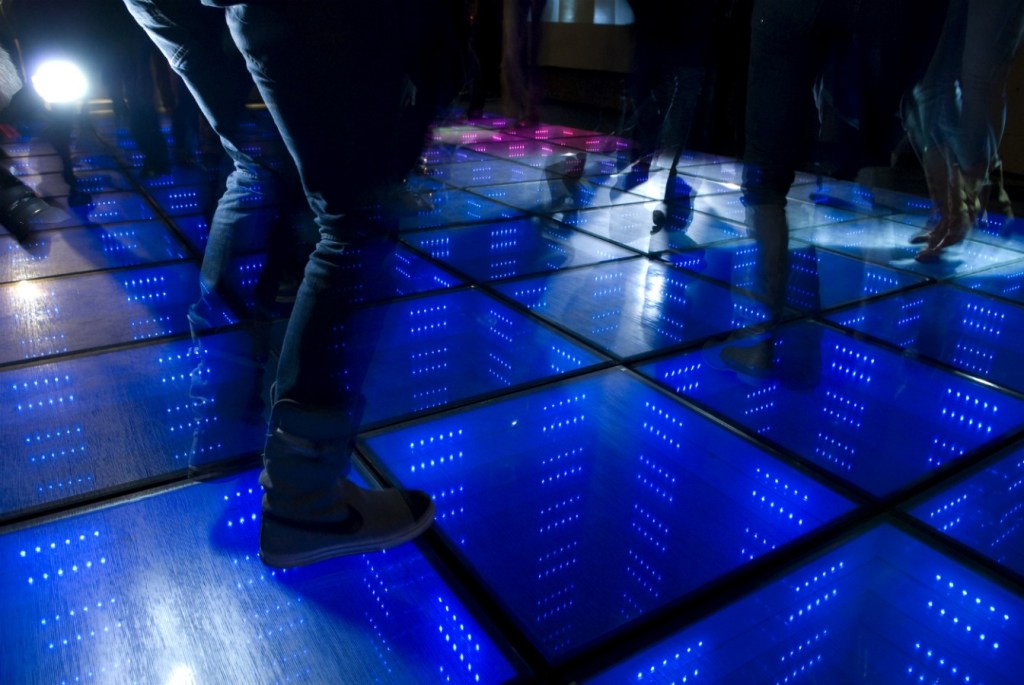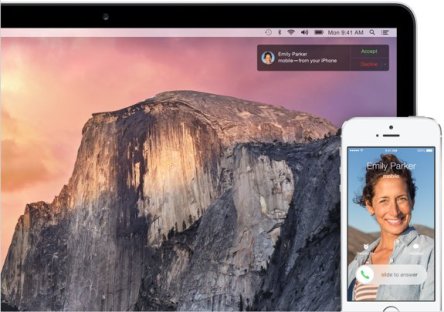Believe it or not, iUnit is not the next device a certain ubiquitous technology company wants you to run out and buy. Rather, it’s a new modular housing project coming to Denver, Colo. in 2015, blending smart energy use, wireless connectivity, green construction and the urban living preferences of American Millennials. iUnit is intended to challenge the way we think about apartment living today, says founder Brice Leconte. A Washington, D.C. entrepreneur with a passion for startup technology, Leconte is currently an Entrepreneur in Residence at the University of Maryland as well as an advisor and mentor at Georgetown University. “iUnit is really a reflection of how I see the world and what I want to do with commercial real estate,” said Leconte, who worked on large single-family home developments early in his career. iUnit at Highland Park is his first foray into the multi-family space. We recently spoke to him about the project and what makes it unique. Tell us about iUnit. What’s it all about? Leconte: There are a lot of things in real estate that don’t make sense to me. One of them is on the modular front – why we are still building buildings out in the elements, while they are being rained and snowed on. I’ve wanted to build differently for a long time, and modular construction has always made sense to me. Building in a controlled environment, we end up with a much better, greener product, and better worker safety. That’s the method we’ve chosen for our multi-family building. We will use a factory in Idaho for the module construction. The other thing that has never made sense to me has how commercial real estate has lagged behind in integrating technology into its buildings. How can we introduce...
Apple Springs Forward
2015 Product Previews
Clocks sprung forward announcing spring and so did Apple one week ago in San Francisco, where the latest devices and services were announced. Some of them were expected, having been announced in late 2014, some of them were surprises which kicked up international conversation. A brief review of the company’s numbers reminded the audience why Apple is one of the top companies of the world – 453 retail stores worldwide were visited by 120 million people during the last quarter alone. 700 million iPhones have been sold so far, making the iPhone the top selling device in the world. Apple TV, shy until now, seems to have found a way to outgrow the 25 million units sold so far. HBO Now will launch in early April at $14.99 per month with Apple as exclusive partner. For the event, Apple has lowered the price of its device from $99 to $69. Apple Pay has seen a positive trajectory, too. From the initial six banks that originally supported the initiative, it now has reached over 2,500 banks and won’t be stopping there. Tim Cook announced that soon vending machines will work with Apple Pay. CarPlay is also working its way up; over 40 models of cars will offer it by the end of this year. Perhaps even more interesting is the announcement that every “major” auto manufacturer has committed to using it. CarPlay’s mission is to increase safety while driving by making major phone features easier and safer to use, such as text-to-speech and voice recognition. Apple decided to step up and help health innovation with the new iOS software framework ResearchKit. It was built after close collaboration with 12 research institutions, among which are the University of Oxford and Stanford. This new app lets people volunteer to join medical research studies and also take tests to detect walking in line, vocal variations, or tapping in rhythm to test for Parkinson’s disease. Users decide how to share their data, and can decline to share it with Apple if they wish. ResearchKit will be open source, available next month, but with the first five tests built with it are already available. These help people participate in tests for Parkinson’s, diabetes, cardiovascular disease, asthma, and breast cancer. A new MacBook entered the scene; it completely stole the spotlight, thought to be reserved this spring for the Apple Watch. For many years now, Apple hasn’t made any changes in MacBook Air’s core design, the top of the line thin-and-light laptop. One port to connect them all The new 12-inch MacBook device is the result of a complete revamp that dumps virtually every conventional port – Thunderbolt, SD card slot, power connector – in favor of a pair: a single USB Type-C connection and an audio jack. The USB-C connector supports power, DisplayPort, VGA, data, and HDMI. Apple focused on wireless connectivity using Wi-Fi and Bluetooth; the company will sell VGA and HDMI adapters separately, meaning that only DisplayPort, charging, and USB 3.1 connectivity is supported natively through the single port. This advance helped turn the 12-inch MacBook into the slimmest, lightest MacBook ever; and a very silent one, too. The new MacBook doesn’t make a sound as it flaunts a fanless design, a feature that required a complete makeover. Under the hood it sports a new energy-efficient Core M Intel processor that sits in a logic board 67 percent smaller than Apple’s previous best. It runs at 1.1GHz that can Turbo Boost to 2.9GHz, consuming a mere 5 watts of power. Intel HD Graphics 5300, 8GB memory and 256GB SSD complete the logic board. The keyboard lies from edge-to-edge with closer together keys than its counterparts. The real novelty is in the engineering effort to create a new keyboard switch that replaces the scissor switches that power most laptop keyboards: the “Butterfly mechanism.” The new mechanism uses a single assembly with a stainless steel...
e-Commerce Delivery
From Drivers to Drones
The NAIOP Commercial Real Estate Development Association recently held its second annual E.Con in Atlanta, a conference dedicated to e-commerce innovation. During the two-day event, last mile delivery stayed at the forefront of conversation. As the nation faces a shortage of 240, 000 truck drivers, e-commerce companies are actively seeking alternatives to traditional delivery methods. Panelists and attendees discussed four current trends: Unmanned vehicles The lack of CDL drivers and the high costs of employing them are leading e-commerce retailers to seek other ways of getting products from distribution centers to the homes of consumers. Removing drivers altogether could be the solution. That’s one approach that has been tried in Europe and Asia. Those programs started 10 years ago. Unmanned vehicles still haven’t caught on because studies (and many companies) suggest that automated trucks are most suitable for interstate conditions. The last mile in urban and suburban areas has risks associated with pedestrians, frequent construction and redirects, varying laws, and erratic behavior from human drivers nearby. More research and innovation will be needed to make companies and consumers comfortable with unmanned delivery vehicles in heavily populated areas. Uber-style delivery systems Independent delivery services are also popping up across the nation. Drivers for hire (those with a standard non-commercial license) can carry out deliveries from urban and suburban distribution centers to doorsteps. They do not require the pay or hours of career truck drivers. Start-ups and smaller e-commerce companies are exploring these options. They may become more prevalent in the future. There is one major problem. Currently, there is no software that coordinates product size, weight, and shipping distance with these drivers for hire. Everett Steele, CEO of Kanga says, “There is this idea, ‘I want to be the Uber for delivery,’ but one of...
Smarter Sleep
Tech for the bed
One third of our life is spent in bed. Sleep is vital to a healthy and relaxed life and the technology today comes to bring even more comfort in the bedroom. The latest is the invention of Italians Matteo Franceschetti and Massimo Andreasi Bassi, the Luna mattress cover. Luna is a smart device that will start shipping in August 2015 after having raised $552,153 of a $100,000 goal on Indiegogo crowdfunding website. In fact, the project sounded so exciting to supporters that the goal amount was gathered within 6 hours. Everybody dreams of a good night sleep. The mattress cover is made out of 5 layers: top and bottom fabric layers, a sensor layer, a batting layer, and a temperature control layer. It comes in 4 sizes: full – 54in x 75in; queen – 60 in x 80in; king – 76in x 80in; California king – 72in x 84in, and weights only 7lbs. It is made almost entirely out of polyester and can be machine-washed. Its intelligence is provided by a series of sensors: sleep phase sensors, biometrics sensors (temperature, respiratory, and heart rate), ambient temperature and humidity sensor, ambient light sensor, plus a microphone. It has Wi-Fi-enabled integration with other devices in your home. Its low voltage system is powered through a 90W power supply. Let’s have a look at how it watches over our dreams. Luna is designed to slip over your mattress, as a fitted sheet does. Its sensors collect information and send it to your smartphone where you can view how well you’re sleeping at night; over time, the information forms profiles of your sleeping behavior. An exciting aspect is its dual zone technology that lets you set different temperatures for each side of the bed. Once it learns how...
Bitdefender BOX
Smart home security
As soon as the first smart home device launched, I’ve started wondering: who was going to put a leash on what we now call The Internet of Things. Surely all with an interest in this age of ultra-connectivity and smart devices have had at least one vision where all these things around us turned against us and took over. Sounds scary, no? Just recently, Stephen Hawking’s warning regarding artificial intelligence and how it could end humankind made international news. The first test space for the internet of things and artificial intelligence is the “smart home.” We are now witnessing the evolution from building and home automation to smart homes: this evolution is driven by the progressing maturity of the Internet of Things and the use of artificial intelligence. Current significant technological challenges revolve around the immaturity of home intelligence and the means and ways to “educate” it. Romanian antivirus firm Bitdefender strives to do just that, although not directly. Bitdefender BOX is a physical network device described as “the security solution for the Internet of Things,” but not only that. The BOX is claimed to be a defense against all security layers, usually sold only to businesses, such as botnets, phishing, data theft, or everyday malware. The hardware piece took over one year of assiduous work to be complete was designed to secure not only PCs, but also tablets, smartphones, smart TVs, smart fridges, lighting systems, and alarm systems connected to Wi-Fi. Bitdefender BOX is a fascinating hybrid between a router, network firewall, and intrusion prevention system. Its specifications are far from impressive – single-core 400 MHz MIPS microprocessor, 16 MB Flash memory, 64-MB DDR2 RAM, two 10/100 Ethernet ports and a wireless chipset that supports the 802.11b/g/n Wi-Fi needs, capable of speeds of...
Windows 10
The Next Chapter
The future of computing, in Microsoft’s vision, is way beyond the mouse, keyboard, and touchscreen. Will this extraordinary vision of personal computing be strong enough to walk side-by-side Apple and Google? Time will tell. Let’s take a look at Microsoft’s pitch. Many had given up hope when picturing Microsoft’s future in the world of OSes, after the launch of 8 and 8.1. But the vast majority of us has at least one device running on Windows OS, typically a PC or laptop. The press event which took place last week in Washington made spectators wonder: is this really a Microsoft conference? It was indeed Microsoft, and it made 2015 be the year that science fiction becomes real. Windows 10 will arrive in fall 2015 as a free update to Windows 7, 8, and 8.1 and will run on phones, tablet, laptops, on a massive conference-room TV, and a mind-blowing holographic headset. Opening the session, Joe Belfiore reminded attendees what the company showed off last September regarding Windows 10. Then, news started flowing. Cortana Enters the PC Platform The witty Cortana has outgrown the Windows Phone platform and now finds a home in Windows 10, aiding with the system’s search features. She sits nicely right next to the Start button on the desktop’s taskbar, able to perform any basic trick she does in the Windows Phone, whether she’s asked vocally or via text. Thanks to Microsoft’s cloud-based Bing brains, she is able to advise whether or not you’ll need a coat the next day by checking the forecast. She can dig on your local machine, OneDrive account, and even your business network, to find files or respond to commands through natural language queries: Belfiore asked her to find some specific PowerPoint slides and to show...
CES Fashion
Wearable Technology
The era of wearables shone bright at the International Consumer Electronics Show this year. Slowly, the bulky, unattractive gadgets make room to elegant and fancy ones. Here are some of the most stylish pieces that stole the spotlight in Las Vegas. Stelle Audio Earbud Locket. The creators of the design-focused audio products befriended high-end fashion with wearable necklaces and earbuds. The relationship materialized into a beautiful Bluetooth earbud system shaped into a lovely crystal necklace. This gives the headphones an extreme makeover – they roll up nicely into a crystal locket necklace that look great even while not in use. Set up is side-aided by voice prompts guiding the user through the Bluetooth pairing. The controls are on the locket itself, eliminating the trouble in finding the cord that has the set of controls. It has a built-in microphone which allows for hands free calls with the sound quality is standard with 6mm drivers. The rechargeable lithium-ion battery is said to last through 10 hours of use. The necklace comes in two colors: onyx and seabreeze. It will become available in February at $199. Swarovski x Misfit Shine – they formed a team that designed the Swarovski Shine collection, a fancy set of fitness- and sleep-tracking jewelry. The collection features nine pieces that include watches, pendant necklaces, and bracelets with Swarovski’s looks and Misfits’ brains, able to detect steps taken, calories burned, distance walked, and sleep quality. The sparkling tech-jewels require no charging and have a battery lifetime of up to 6 months. The collected date syncs with your smartphone by simply placing the Swarovski Shine Activity Tracking Crystal on your smartphone touch screen. The preorders start at $169.99 and go up to $249.99. Bang & Olufsen premiered BeoPlay H8, the wireless headphones with...
Tech on the Slopes
Record and relive epic runs
Winter sports fans, this one is for you. The white powder sparkles from the top of the mountains and you can’t wait to get there and slide down, over and over again. The next generation skiing and snowboarding is here powered by the most exciting wearable technology existing on any mountain anywhere. One of the most popular devices out there is the action cam GoPro Hero 4 Black Edition. It offers stunning image quality and powerful new features that takes the cameras’ industry to a whole new level. The camera itself is a tiny box with a powerful processor able to record amazing video quality. The Hero4 Black displays incredible high-resolution 4K30 and 2.7K50 video and high frame rate 1080p120 video. Its features include built-in Wi-Fi and Bluetooth with super upload speed that sends your ride-videos up on various channels of social media. To help you find easier those cool moments without having to go through hours and hours of video, Hero4 Black has on its right side a ‘Hilight Tag’ button, which when activated, puts a tag on them and helping you find them faster when viewing the footage in GoPro’s free mobile app or desktop Studio software. On its left side is an easy-to-lose removable cover that protects Micro-HDMI and Mini-USB ports and the microSD slot that supports cards of up to 64GB. The Mini-USB port is used to charge the device and transfer the content off your microSD card, but can also be used with an optional 3.5mm stereo mic cable so you can attach a studio-quality external mic. The device doesn’t have a built-in touchscreen, but it has a Hero port on back that allows you to attach GoPro’s LCD Touch BacPac or the Battery BacPac. Unlike Hero3+ Black, Hero4...
The Cicret Secret
French Wearable Tech
Looking back at the course of innovation in technology throughout 2014, it’s clear that wearables have gained a lot of traction. Watch after watch, bracelet after armband, the French are now introducing the wristband – Cicret. The first thing to know about this little wonder is that the prototype is still in the works and if you want to spend some money on it now, the only way to do it is to donate for the development of its first prototype on the Cicret website. Back to the description. The Cicret Bracelet is a small wristband that supposedly has the ability to turn the wearer’s arm into a touchscreen. It sounds pretty cool to be able to give up your smartphone in an era dominated by them. The device works through a tiny embedded pico projector and a row of 8 proximity sensors built into the bracelet that point towards the user’s forearm, reminding of the technology behind projected keyboards. These enable the Cicret system to detect the location and movement of the user’s fingers, turning the surface of the skin into a touchscreen. The regular gestures apply: tap, swipe, and pinch. Cicret will operate as a standalone device and, when activated with a twist of the wrist, projects an Android interface onto the arm. The proximity sensors detect where the user’s fingers are and allow them to interact with the interface as they would on any Android device. Furthermore, the device features an accelerometer and a vibration module, as well as an LED for notifications. Connectivity is provided by way of WiFi, Bluetooth and a Micro USB port. The bracelet will also have its own onboard storage of 16GB and 32GB. The bracelet will allow users to send and receive emails, browse the...
Myo Armband
Multi-faceted wearable tech
Canadian startup Thalmic Labs blew people’s minds back in 2013 when they presented an armband that empowered the wearer to control several kinds of technology using simple hand gestures. The Myo armband changes the way we interact with everyday computing devices. Seeing how it works is like glimpsing into the future, or at Iron Man Tony Stark’s gesture-controlled hollo-computer. What is Myo? Myo is the most natural way yet to merge technology and people. Myo seems to be the next step after we’ve hit the limits of today’s form factors, whether they are personal computers, tablets, or smartphones. Thalmic Labs’ armband is a gesture control device that is placed around the widest part of the forearm. A piece of software displays a series of training gestures to get you accustomed to the interface. The gestures are simple: bend the open hand left or right, sweep the forearm left or right, spread out the fingers, clench into a fist, press the thumb against the pinky. The last gesture is the one that awakes and puts Myo to sleep. Also, when slipping it off your forearm it automatically goes to sleep, saving the battery life. You might need to reposition either your arm or the armband to have it recognize the gestures, but once you figure it out, it’s easy to use. In case you worry that if won’t fit your forearm, Thalmic Labs say that the armband was created using a comfortable flex technology which allows for one-size-fits-all design, and it comes equipped with 10 sizing clips. Myo comes in black and white. It weighs 93 grams, 0.45 inches thick. It’s expandable between 7.5 – 13 inches (19 – 34 cm) forearm circumference. How does it work? Myo uses Bluetooth Smart technology to connect...
Special Delivery
Managing Packages
More than 37 million U.S. apartment residents receive enormous numbers of holiday packages every year. A load that large requires more than mere tracking numbers. For that reason, one in four apartment communities use specialized software to manage residents’ packages on site. These are among the findings from the National Multifamily Housing Council (NMHC) and Kingsley Associates’ 2014 Package Delivery Survey. The survey was fielded in October of this year, with 2,758 community managers from 28 leading firms responding. The survey also found that during the holiday season, a typical apartment community can receive double the typical 100 packages received weekly. After all, consumers spent $2.3 billion on Cyber Monday in 2013 alone. In more than three-quarters (77 percent) of apartment buildings surveyed, package carriers try to deliver to the door, as opposed to going to the manager’s office, but the number drops to one in five (20 percent) in high rises. If residents aren’t in, carriers take packages to the management office 70 percent of the time. This results in an enormous number of packages for the community manager to handle. “Managing deliveries is a real issue facing the industry,” says David Smith, chief operating officer and vice president, San Francisco-based Kingsley Associates. “There is inherent risk and valuable time associated with sorting, storing and notifying residents of package deliveries at the community level. Senior executives are clearly taking note of the escalating staff hours spent managing the process, particularly during the holidays.” Many apartment companies are increasingly adopting software solutions to help them get a handle on packages. Almost one-quarter, or 24 percent, of properties utilize software to track packages and notify residents. Among high-rise apartment communities, 60 percent are relying on specialized software. Apartment managers are as likely to notify residents...
Yoga 3 Pro
Takes on MacBook Air
Every once in a while, Microsoft and Apple reignite the classic Mac vs. PC battle through cleverly designed ads. The latest attack launches Microsoft’s latest notebook, the Lenovo Yoga 3 Pro, placed head-to-head with Apple’s famous 13-inch MacBook Air. The ad starts by comparing the 17mm ‘thickness’ of the MacBook Air with the 13mm ‘thinness’ of the Yoga 3 Pro, continuing with a series of moves that flaunt the flexibility of the tablet, showcase the touchscreen and tent modes of Lenovo’s latest convertible, while the Air is failing to “dance” in funny comparisons. The dance performance ends with the MacBook Air declaring ‘game over’ and closing its lid. The ad is a light sting at Apple, but it does reveal the direction the Microsoft is taking and where its marketing focus lies. Apple recently moved into the top five PC makers for the first time, thanks to an increase in Mac sales of 8.9 percent in the last quarter; that is translated into 5.52 million Mac sales over a period of three months. Besides the amusement these ads bring, it’s hard to determine whether or not they are effective. Surface sales more than doubled in the last quarter, but there are things left unsaid in the above ad about the powerful Air, advantages that Microsoft chose to not even mention with its latest ad campaign, more precisely price and battery life, and not necessarily in this order. Price-wise, there is a 30 percent differential: Apple’s laptop starts at $999 and Lenovo’s at $1299. This $300 difference is partly because of the high-resolution touchscreen display on the Lenovo. However, Apple’s choice to use an inferior screen on the MacBook Air helps it run for 13 hours without charging, while Lenovo’s Yoga 3 Pro 5,200mAh battery...
Best Business Laptops...
For Every Office
Today’s professionals can’t afford to miss a beat. Fulfilling client expectations often requires constant connectivity and reliable mobile access. We’ve narrowed down some of the best laptops for professionals that deliver the power, durability, and advanced features that you need to stay on top of the competition. Best Overall We hear so much about the Apple MacBook Air that we figured tech magazines must be getting some sort of kickback. Truth is, the MacBook Air family has earned its reputation. The ultralight, 3lb machine is effortless to lug around, which comes in handy when you’re running through airport terminals or dashing to a cab. Professionals can choose from 11” and 13” monitors, both offering quality displays at a wide variety of angles, perfect for quick meetings or demos around the machine. A sensitive touchpad makes navigation quick and easy. Both MacBook Air models come with a 1.4-GHz Intel Core i5 processor, which is powerful enough to get you through most work functions, though not the best available in its class. With 4GB of RAM and 512GB SSD you’ll enjoy speedy, robust operations even with multiple programs running. The FaceTime HD camera provides crisp, clear images so that you can get the most out of your web conference. With a battery life of 12 hours, you can complete the average workday without being tied to an outlet. Best Ultrabook While MacBooks are receiving their due, the Dell XPS Series—with screens ranging from 12”-18”—is causing a rumble of its own. It offers a matte aluminum casing that’s lightweight, durable, and exquisitely designed. The contoured keypad makes content creation more comfortable on the wrists and hands. The responsive touchpad facilitates easy operation, though with an optional Quad HD+ (3200×1800) touch display you may not need a touchpad...
Fast and Furious
Fiber Flourishes in Texas
The map of U.S. cities wired with Internet super-speeds is growing steadily. Providers have diversifed: in addition to Google, AT&T is bringing a flashy-fast fiber-optic network to towns throughout the country. Recently San Marcos, Texas-based Grande Communications announced plans for a 1 Gigabit network in already-wired Austin, while AT&T continues to grow its U-verse, heading for San Antonio after setting up in Austin. AT&T’s U-verse network is capable of providing upload and download speeds of up to 1 gigabit per second, to both consumers and businesses. The speed, explained in simple terms, means that 25 songs could be downloaded in one second, the customer’s favorite TV show in less than 3 seconds, and a high-definition online movie in less than 36 seconds. The Wi-Fi speeds will increase and the users will have the ability to schedule DVR (with greater storage capacity) recordings and watch TV on over 30 models of smartphones and tablets, as well as PCs. For businesses, whether they’re startup companies or veterans, this access to high-speed networks means the ability to develop innovative products that will boost the economy. This will give them the opportunity to compete on a global scale with other countries that already have much faster networks in place. Faster speeds means faster upload, download, and large data files sharing, cloud back-up, and seamless videoconferencing with suppliers, business partners, and customers. The AT&T GigaPower network launched in Austin in December 2013 and the result exceeded expectations: the demand was much higher than anticipated. As result, the company announced to expand its ultra-fast fiber network to approximately 100 cities and municipalities across 25 markets throughout the country. “Similar to previously announced metro area selections in Austin and Dallas and advanced discussions in Raleigh-Durham and Winston-Salem, communities that have suitable...
Samsung Unpacked
Limited change in new releases
Berlin – The recent Samsung Unpacked’ event showed the world the products that will drive sales through the holidays and into 2015. Was it enough to put an end to the three straight quarters of falling returns and regain some mobile technology traction? Here is a quick look at the new Samsung Lineup. Galaxy Note 4 The new Galaxy Note 4 is the big-screen flagship for Samsung. It didn’t grow in size (thankfully), remaining at 5.7 inches, but it retains the plastic faux-leather backing even though it shoots for a classier look by removing the fake stitching mold and by adding the metal frame to a higher-res display. If you haven’t been a fan of previous versions, this is not your next phone. The device has a heart-rate monitor and the S5’s fingerprint scanner integrated into the home button. The back cover is removable, allowing access to the battery and microSD card slot; a downside is its lack of water resistance feature existent in the Galaxy S5. The Galaxy Note 4 presents the Super AMOLED display with a “quad HD” resolution translated into 2,560 x 1,440 pixels; the pixel density reaches new heights through the boost from 1,080p to quad HD resolution. The S Pen became more sensitive, seeking to mimic natural handwriting, and was given some function inspired by the computer mouse: minimizing the app windows and dragging them around for multitasking, copy/paste, and define words that appear on the screen. Interestingly, and somewhat disconcerting, is the fact that the app windows were treated like standard PC windows – the fact that they don’t always scale in size can clutter space pretty fast. The drag-and-drop window design demands some work until you get used to it. The Note 4 has with it the...
Tech’s Top Towns
Hot spots to watch
As many developers, investors and brokers are discovering, “technology” is no monolithic industry. The tech sector translates into multiple business specialties and magnets, as dozens of cities stake their claim to the technology boom – with far-reaching impacts on commercial real estate. Along with its highest-profile component, consumer electronics, the age of technology encompasses companies and real estate requirements ranging from finance and insurance to the automotive sector. This creates opportunities and challenges for real estate stakeholders as they tailor their projects and services to their clients’ needs and anticipate which markets will join the ranks of national high-tech leaders during the next decade. For now, at least, the top of the heap remains clear-cut. Global giants like Oracle, Google and Facebook continue to make Silicon Valley the go-to location for high technology. Its prominence is symbolized by Apple’s 2.8 million-square-foot headquarters in Cupertino. Already renowned for its spaceship-like ringed design by Foster + Partners, Apple’s new home is scheduled for completion in 2016 at a rumored cost of $5 billion. Though Silicon Valley retains a largely suburban model for a technology hub, the center of gravity for technology firms of all stripes is migrating to urban settings. “I think the biggest change I’ve seen is that technology tenants are seeing the benefits of being located in the city, near highly skilled workers,” said Lori Mason Curran, director of real estate investment strategy for Vulcan Inc., developer of Amazon’s campus in Seattle’s South Lake Union neighborhood. Other established hubs—which are generally considered to include San Francisco, Boston and, most recently, New York City—face competition from a variety of contenders. For example, JLL Inc.’s 2013 ranking of top tech markets finds both expanding activity and strong potential in a strikingly diverse assortment of locations. The roster ranges from Baltimore and Atlanta in the East to Austin and Indianapolis in the Central Region; Salt Lake City and Phoenix in the West; and in the Pacific Region, Portland, San Diego and Los Angeles. JLL’s 2014 update was still in progress at press time, but several new players earned a mention: Detroit, Denver, Minneapolis-St. Paul and the East Bay of San Francisco were among the markets to watch. A common thread among these markets is the presence of a highly educated pool of talent. “At the end of the day, it really comes down to the quality of the labor force in a particular market,” observed Colin Yasukochi, director of research and analytics for CBRE Group Inc.’s Northern California region, adding, “The lifeblood of the technology industry is innovation.” As a rule of thumb, mature and rising technology markets are almost always located within striking range of at least one major university, he noted. Especially for fledgling companies, a ready source of venture capital is crucial, as well—hence, the migration of some venture capital firms to San Francisco from suburbs like Sandhill and Menlo Park. “That speaks to the recognition that San Francisco is really the desired location for high-tech financiers,” noted Cara Trani, a San Francisco-based vice president for JLL. Even so, there are some nuances in the ties between venture capital and technology companies. Though each stakeholder still prefers to be physically near the other, today’s communication tools provide some flexibility. “Funders have the ability to be more mobile, because we’re so well connected,” noted Schiada. “It isn’t the end all, be all.” A less tangible but compelling factor is a vibrant urban lifestyle, with ample opportunity for recreation and cultural amenities. There is a demographic influence, as well, as the professionals pursued by technology companies tend to be in their 20s and 30s. This article originally appeared in the August edition of Commercial Property Executive. Read the rest of the story...
Hudson Yards
Quantified Community
New York City’s Hudson Yards marks the beginning of a new era in urban design. Developed by Related Companies and Oxford Properties Group on the West Side of Manhattan, the $20 billion project is being touted as the largest private real estate development in the U.S. history and a model of responsible development. Everything about Hudson Yards is impressive; from the massively heavy, incredibly strong platforms that will serve as a foundation for the premier district, to the innovative infrastructure systems and state-of-the-art buildings that will redefine the area’s vibe and skyline. But what’s fascinating about Hudson Yards are not just its grandeur and advanced engineering. The mega-development puts people first; it promises to build a nurturing environment with emphasis on livability, sustainability and occupant well-being. To accomplish this, the developers have launched a series of interactive programs, including the “Quantified Community” project, a joint venture with New York University’s Center for Urban Science and Progress (CUSP). The partnership aims to create the nation’s first “Quantified Community” – a fully-instrumented urban neighborhood that will measure and analyze key physical and environmental attributes at Hudson Yards. With this new project, Related and Oxford seek to deliver an enhanced experience for both tenants and residents while improving operational efficiencies and productivity at the complex. “The ability to conceive of and develop an entirely new neighborhood creates tremendous opportunities. Hudson Yards will be the most connected, measured, and technologically advanced digital district in the nation,” said Jay Cross, President of Related Hudson Yards. “Our cutting-edge commercial tenants are drawn to Hudson Yards for its state-of-the-art infrastructure featuring unprecedented wired, wireless, broadband, and satellite connectivity; and energy optimization through on-site power generation and central waste systems. Through our partnership with CUSP we will harness big data to continually...
Top 5 Resident Complaints...
Smarter ways to solve them
J Turner Research analyzed 10,000 customer satisfaction surveys from multi-family communities throughout the nation to determine the top resident complaints. The results reveal that renter satisfaction does not depend on a slew of custom features and amenities. Rather, four out of five complaints depend solely on how onsite staff manages priorities: 1. Rental rates 2. Poor grounds/common area upkeep 3. Disorganized staff/lack of communication with staff 4. Quality of response to maintenance requests 5. Overall customer service experience Yardi clients weigh in on how they handle multi-family’s most ubiquitous complaints. Rental Rates There is little that onsite staff can do to influence long term rent rates. That’s why it’s important for staff to hone in on the assets around them, reminding residents that they are paying for the unit and all that the location has to offer. Larry Busgeon, Controller at Landmark Realty of San Francisco, has no issue with marketing exceptionally high rents. The prices are a great value because the city has so much to offer. “It’s a wonderful place to live and you have to pay to live in a highly desirable area,” says Busgeon. He’s ready with a list of the city’s best features: restaurants, culture, cutting edge environmental programming, a unique political atmosphere, great schools, natural beauty, and moderate weather year round. Finding ways to forge a direct relationship between the property and what the community has to offer will add value for residents. Staff may create alliances with local businesses, sending customers their way in exchange for discounted goods and services. Maintenance Crews Whether landscaping and maintenance technicians are hired in house or through a third party vendor, they are still representatives of office management. As such, it’s important for onsite staff to make sure that technicians are staying...
Tech for Senior Care
Monitoring and Medical
Statistics show that over 95 percent of the people over 75 years of age prefer to stay at home rather than move to assisted living residences or nursing homes. It’s a perfectly natural desire to remain independent, but for their children this translates into a source of worry – that they may fall, forget to take their meds, or simply just need assistance day to day. In recent years, technology has provided new options to adult children and their parents, revolutionizing the opportunity to stay at home, safely. The new technologies, although still a young industry, not only reduce worries, but enhance family relationships and reduce costs. These technologies vary from very basic to sophisticated. The technology in development can be broken down into two camps: one for monitoring and surveillance with electronic devices keeping track of a person’s medical condition, and automatically alert health care staff when intervention is required. Sensors are also used throughout the home and will alert the designated person if, for instance, someone has not left the bathroom after a certain period of time, a sign that something may have gone wrong. Philips Lifeline is a monitoring system with a basic set of features: in case of emergency, users push the button of a pendant they wear on themselves, thus alerting the Lifeline call center. An operator calls on a speakerphone to check on the problem and if no one answers caregivers and emergency medical personnel will be announced. The system has a fall-detection feature that contacts the call center immediately once a fall is detected. MedMinder is a medication management system that acts like a computerized pillbox. It doses the different medications the user needs to take on a daily basis and when the time comes to take...
Solar Roadways
Fast Lane to the Future
If you ever played with electric slot cars as a kid, this idea may resonate. An inventive couple has reimagined the world’s roads as the source of solar/electric power for vehicles. Think the idea is out there? Read on to find out what they’ve envisioned. With global warming in mind, Scott Brusaw (right, driving a tractor on a prototype parking lot built using the technology) and his wife Julie started working on the idea of replacing petroleum-based asphalt and concrete surfaces with a material that would capture solar energy. The hope was to find a way to reduce and eliminate coal-fired power plants. The result of their efforts is the Solar Roadways project. The focus was on building solar panels that could be walked upon and driven on, essentially producing solar-powered cases containing photovoltaic cells, with an exterior strong enough to protect the sensitive electronics inside. These unique panes would also store the collected solar energy. They’d be used to re-pave the roads, or any surface that soaks in the sun all day long, and would need to have some fantastic features: – to withstand the weight of an 18-wheeler; – to melt ice and snow; – to capture and send the extra energy to the cities. The answer? Perhaps surprisingly: Glass. Tempered and laminated glass with textured surface to avoid sliding. Furthermore, these cases would have LEDs to illuminate road signage and to advice the driver to slow down on the portions with increased risks, as well as heating elements to withstand snow and ice. Solar Roadways | Michéle Ohayon from Focus Forward Films on Vimeo. This might seem unrealistic, but the idea has been taken seriously. It received awards and nominations from GE, the World Technology Award, Google and the IEEE Ace...
Alan Missen
FirstService Residential
FirstService Residential is the largest third-party manager of homeowner’s associations in the United States, with more than 6,000 properties – and another 600 or so in Canada. So it makes sense that the Dania Beach, Florida-based company would be think big about how to deliver technology solutions specifically for the HOA lifestyle. Whether you’re a resident or owner of a home in a master planned community, a community manager of an HOA or a member of a community board of directors, FirstService is thinking about how to improve your experience, and give you mobile applications to obtain information and complete neighborhood-related tasks. “Whatever we can do to make the community manager’s life easier, and do that in an effective way, translates into a better experience for the resident,” said Alan Missen, recently appointed CIO for FirstService. “That’s such a big part of our culture, making a difference in every resident’s life every day.” Missen talked about the various apps FirstService is developing and how they hope to make the HOA experience more mobile-friendly for everyone involved. Tell us about your existing resident service portal. Missen: FSRConnect is our core property management solution. It’s focused on helping the associates to service the property and has a lot of information around the residents, the properties, and it aids in managing much of the activity around amenities. In the HOA world, there’s lots of documents that need to be put in the hands of residents, so we handle document management with this solution. We manage work orders, violations, architectural modifications, and we also provide some financial data that residents can touch. We’re generally more cautious around that, the financial data being more sensitive, so we keep a lot of that back in our accounting solutions. But we...
The Smartshoe
An app on foot
The world of wearable technology is still in its early stages. After wristbands, glasses, and watches, an Indian start-up firm, Ducere Technologies, has introduced the smartshoe. These Bluetooth enabled shoes called Lechal (‘take me there’ in Hindu) will sell for $100-$150 a pair, and are scheduled to hit the market next month. The product has already received 25,000 pre-orders, and the company expects to sell 100,000 by March 2015. Originally designed in 2011 with the goal of assisting the visually-impaired with directional cues, Krispian Lawrence, co-founder and chief executive of the company, then realized the product could be of interest to joggers, mountain bikers, and tourists as well. The Lechal smartshoe is designed in India but manufactured in China. The shoes are developed in two models: a complete pair of shoes with Lechal insoles or a package of two insoles that can be used in the customers’ own shoes. They are powered by removable and rechargeable lithium-polymer batteries that should be good for a few days of use. Lechal smartshoes have been designed to have the same weight, to be as comfortable as the typical running shoes, and able to support up to 500 kg per shoe. The smartshoe is designed to connect to the iOS, Android, or Windows Phone device via Bluetooth. The insole has the typical slew of sensors that you’d expect from a wearable, allowing the user to accurately track the numbers of steps taken, calories burnt, and distance traveled. What sets Lechal apart from a fitness band is that each insole can vibrate. When you first put on a pair of Lechal smartshoes, you pair it with a companion app on your smartphone. The app takes care of the health tracking part – calories burnt, setting targets, mapping the itinerary...
iOS for Enterprise
Apple & IBM Partnership
Apple and IBM share a past, and recently announced plans to share a future, as both look to continue growth in their respective market niche. The news brought back memories from 30 years ago, when a partnership between the two companies was unimaginable. The goal of the partnership, according to an Apple press release, is to “redefine the way work will get done, address key industry mobility challenges and spark true mobile-led business change.” The move acknowledges the unique strengths of each company – IBM will contribute its big data and analytics expertise and Apple will offer the “elegant user experience of iPhone and iPad.” The enterprise market is not untouched territory for Apple, as plenty of Fortune 500 businesses have already deployed iOS devices. The current corporate customer list includes NASA, Nestle, Deutsche Bank, American Airlines, Cisco Systems, Johnson Controls, Luxottica, and GE. The BYOD trend (bring your own device) in the workplace has been beneficial to Apple as companies have gradually allowed employees to use their personal devices for work email and to access needed data. IDC research firm shows that iPhones accounted for 82 percent of smartphones in use at U.S. corporations and 36 percent globally, while iPads accounted for 73 percent of tablets in the U.S. corporate environment and 39 percent around the world. A new category of mobile apps will become available, debuting in 2015, announced the two companies. These will be tailored to meet the needs of specific industries like “retail, healthcare, banking, travel, telecommunications, and insurance.” IBM’s cloud infrastructure will be heavily used in correlation with Apple’s iCloud service. AppleCare for Enterprise will be added to the customer service domain, providing IT departments and users 24/7 support. “We’re good at building a simple experience and in building devices,” Tim...
Art + Tech = Future
Roosegaarde's revelatory ideas
Dutch artist Daan Roosegaarde has been called “a hippie with a business plan” by the New York Times The Dutch are known for their love of nature – all those bicycles and parks are solid proof. Daan has taken this even further. “I made a decision not to stay in the white cube of the MoMa, with all due respect,” he says. “You need to make it public. You need to make it for everyone.” And that’s what he’s aiming for. At SXSW this year, Daan took the audience on a “safari tour” of what our future world could look like. His expertise as dreamer reveals a future that has a natural glow, due to plants that produce their own light, smart highways that focus on road safety, smog rings that turn pollution into diamonds, and sustainable dance floors that capture the energy of dancers and use it to generate power for the surrounding building. Luminous trees – the future public lighting turns into poetic landscapes Swap streetlights with luminous trees – Daan Roosegaarde at SXSW from Dezeen on Vimeo. Roosegaarde’s fondness for biomimicry (the imitation of the models, systems, and elements of nature for the purpose of solving complex human problems), combined with his attraction to marine life, especially the jelly fish, gave him the idea to try and use the same biological system to recreate trees into energy-neutral ones. In collaboration with BioGlow founder Dr. Alexander Krichevsky and the State University of New York, the first plants of the kind were created and presented in Austin during the SXSW conference. This location was chosen because of the strict regulations within the EU regarding the use of genetically modified plants which forbid him to use them in his Netherlands studio. For Europe, the company currently employs a “biological paint” made of luciferin (the light-emitting compound found in organisms that generate luminescence, such as fireflies or jelly fish); both methods, he says, are harmless to the plant. The Smart Highway Futuristic highways glow in the dark by Daan Roosegaarde and Heijmans from Studio Roosegaarde on Vimeo. The luminous trees idea led to an even brighter dream: the development of a smart highway that comes with some amazing features. It is covered with temperature-sensitive paints that change color as the temperature drops – when the road is icy, snowflakes would pop up as warning for the drivers, lined by the above-mentioned glowing trees, and marked with luminescent road lines that charge at daylight and give light at night to replace all these energy consuming street lights; they remain visible for 10 hours after nightfall. The first highway to test out the paint is in the Netherlands. Interactive lights help save energy by lighting up as a car approaches and turning off as it departs. An electric vehicle priority lane allows you to charge as you drive. The Sustainable Dance Floor Sustainable Dance Floor_ Daan Roosegaarde from Studio Roosegaarde on Vimeo. It is known that movement produces energy. The simple action of walking can generate power, the only thing lacking being the ability to capture it and put it to good use. Roosegaarde designed an interactive dance floor which generates electricity through the simple act of dancing. Using the right materials that produce energy when mechanical stress is inflicted on them, known as the ‘piezoelectric effect’, can turn the dance floor into a big generator, transforming each movement into power. On a larger scale, this can be used throughout the cities, using every vibration to create clean energy. The Smog Ring Smog by Studio Roosegaarde from Dezeen on Vimeo. Perhaps the most amazing project he’s designed, and which is tentatively scheduled to be implemented in the near future, is SMOG. It is the result of ion technology which cleans the air by creating a weak electromagnetic field that vacuums smog from the sky. Using the basic principles of physics – buried coils...
Apple Pushes Continuity...
WWDC 2014 Report
SAN FRANCISCO – The 2014 Apple keynote, delivered here earlier this month, revealed some incredible updates for iOS and OS X, due this fall when the accompanying hardware will be unveiled. The main theme this year is Continuity, which urges users to imagine how much better their digital life would be if the phone, tablet, and laptop all had the Apple logo. It’s now true that a superior operating system for laptop or smartphone performance is no longer sufficient. Apple is pushing the advantages of adopting a cohesive family of devices, hoping that current Apple users have no need to jump ship, and new converts are tempted to completely embrace the Apple culture. Why sell one device when you can sell two or three? With continuity, the user can seamlessly start a task on one of the Apple devices (the iPhone, for example) and pick right where he/she left off to finish it on another device (the Mac), simply by clicking an icon that automatically appears. An iPhone owner with a Windows PC or a Mac owner with an Android phone won’t be able to do this. OS X Yosemite & iOS 8 Since Continuity is the link between the two OSs, the majority of the updates apply to both. Actually, the latest version of OS X is reminiscent of last year’s iOS due to the attention spent on design. Flat design, translucent panels, no gradients, and textures of iOS 7 could be spotted throughout the new OS; app icons have flatter designs, the dock and windows have sharper corners, and a new system font was created for an improved readability. A “dark mode” that dims the entire interface was added to help focusing better while working – “clarity, but also utility”, as Senior...


